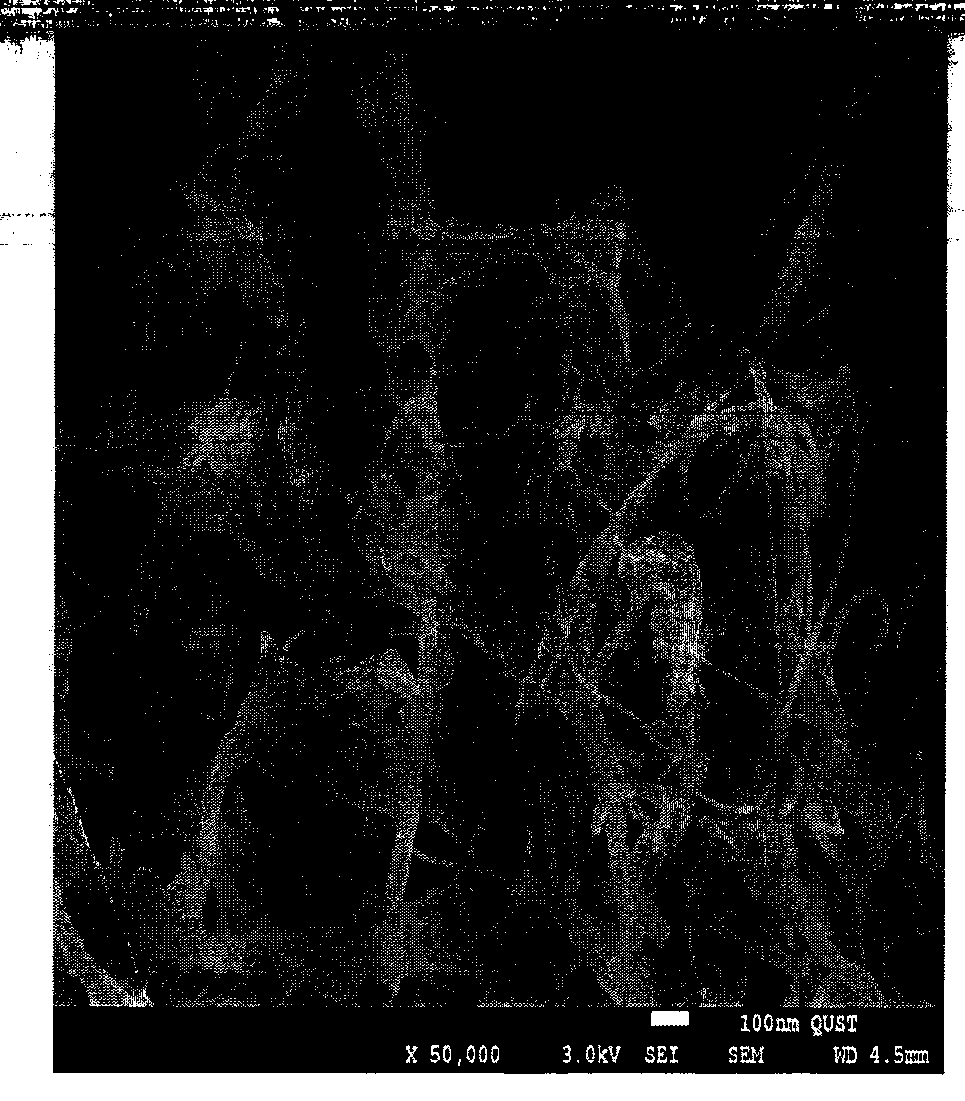New method for preventing nano particles from re-agglomerating during rapid expansion of supercritical fluid
A supercritical fluid, nanoparticle technology, applied in the direction of solution crystallization, etc., to achieve the effect of simple operation, prevention of re-agglomeration, and easy industrialization
- Summary
- Abstract
- Description
- Claims
- Application Information
AI Technical Summary
Problems solved by technology
Method used
Image
Examples
Embodiment 1
[0025] Weigh a certain amount of multi-walled carbon nanotubes and dimethyl isophthalate into a 1-500ml reactor. Connect the reaction device, check the air tightness, use CO 2 Remove the air in the reactor, and then adjust the temperature to a temperature of 0-600°C or higher. Will CO 2 Pass into the reactor, pressurize to 0-30MPa or even higher, and mix for 0-300min or even longer. The mixed supercritical system is quickly sprayed into the container through a fine nozzle for collection, and after cooling, the sample is taken out.
[0026] The dispersion of the two types of multi-walled carbon nanotubes was observed through scanning electron micrographs. figure 1 , figure 2 These are scanning electron micrographs of multi-walled carbon nanotubes that do not contain dimethyl isophthalate during RESS treatment and multi-walled carbon nanotubes that do not contain dimethyl isophthalate during RESS treatment. By comparison, we found that dimethyl isophthalate has wrapped the multi-...
Embodiment 2
[0028] Weigh a certain amount of single-walled carbon nanotubes and dimethyl isophthalate into a 1-500ml reactor. Connect the reaction device, check the air tightness, use CO 2 Remove the air in the reactor, and then adjust the temperature to a temperature of 0-600°C or higher. Will CO 2 Pass into the reactor, pressurize to 0-30MPa or even higher, and mix for 0-300min or even longer. The mixed supercritical system is quickly sprayed into the container through a fine nozzle for collection, and after cooling, the sample is taken out.
[0029] The dispersion of the two types of single-walled carbon nanotubes was observed through scanning electron micrographs. figure 1 , figure 2 These are scanning electron micrographs of single-walled carbon nanotubes that do not contain dimethyl isophthalate during RESS treatment and single-walled carbon nanotubes that do not contain dimethyl isophthalate during RESS treatment. By comparison, we found that dimethyl isophthalate has wrapped the si...
PUM
 Login to View More
Login to View More Abstract
Description
Claims
Application Information
 Login to View More
Login to View More - R&D
- Intellectual Property
- Life Sciences
- Materials
- Tech Scout
- Unparalleled Data Quality
- Higher Quality Content
- 60% Fewer Hallucinations
Browse by: Latest US Patents, China's latest patents, Technical Efficacy Thesaurus, Application Domain, Technology Topic, Popular Technical Reports.
© 2025 PatSnap. All rights reserved.Legal|Privacy policy|Modern Slavery Act Transparency Statement|Sitemap|About US| Contact US: help@patsnap.com



